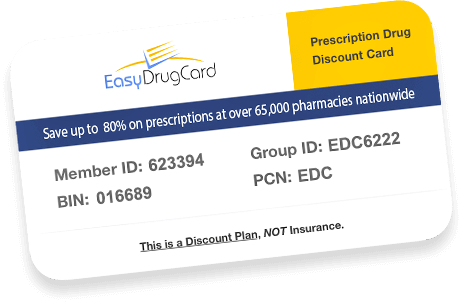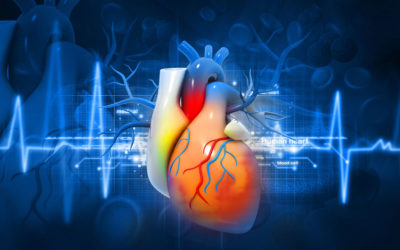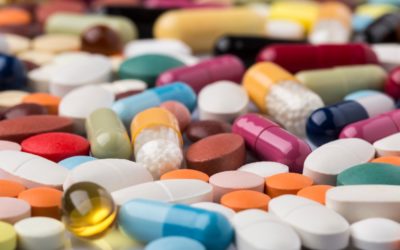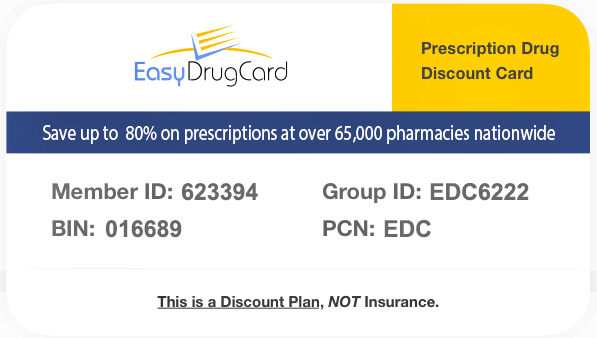Can you spot the Hidden Sugar?
Sugar is a carbohydrate found naturally in a host of different foods ranging from lactose in milk to the fructose in fruit and honey. There are two types of sugar – naturally occurring sugar (like lactose in milk or fructose in fruit) and added sugar, which includes table sugar (sucrose) as well as concentrated sources like fruit juice.
Not all sources of carbohydrate/sugar are bad for us. Our brain and muscles need some for energy/fuel. Individual needs to vary based on activity level. If you’re eating complex carbohydrates in the form of whole grains, fruits and vegetables, you’re providing your body with the right kind of fuel. The problem is that many processed foods have added sugar which supplies energy in the form of calories – and very little else-— minimal fiber, protein, etc.
A high intake of sugar causes our blood sugar levels to shoot up, giving us that feel-good ‘high’ followed by a crashing slump which leaves us tired, irritable and craving more sugary foods. When we consume foods high in sugar, our pancreas produces the hormone: insulin. Insulin allows glucose to enter cells from the bloodstream and tells the cells to start burning glucose instead of fat.
Having too much glucose in the blood is highly toxic and causes insulin resistance. This means that our bodies are not able to efficiently take sugar into the cells for energy. Your blood levels might be high in sugar, but your cells aren’t able to access it and therefore you continue to crave sugar. Quite a vicious cycle! Insulin resistance leads to many diseases including metabolic syndrome, obesity, cardiovascular disease and type II diabetes.

Where is the Hidden Sugar?
How much hidden sugar should you have?
The first step to limiting intake of added sugar is to be aware of your sugar intake and the hidden sugar!
Sugar has over 50 names in our food supply! It’s important to be aware that on ingredient lists, food manufacturers must list ingredients in each product based on weight. This means that the first ingredient makes up the most weight and the last ingredient contributes the least amount of weight per serving. If they use one form of sugar, it will need to be listed closer to the beginning of the list, but if they use a higher amount of total sugar (weight) from different forms (multiple types of sugar), they can hide those other names further down the list…SNEAKY!
So, how much added sugar can you have?
The World Health Organization Recommends:
- Consume <5% of calories from added sugar (if you’re already at a healthy BMI…less if weight loss is your goal)
- That’s just 25 grams on a 2000 Calorie day
- That’s just 6 teaspoons. (To put things in perspective, a 12 oz can of soda contains 9 teaspoons or 39g).
How much hidden sugar are we actually eating?
Conservative estimates put average American sugar consumption over 90 punds per person annually.
That breaks down to:
- 7 pounds per week
- 9 oz per day (110 grams)
- 6 grams per hour (average)
How does YOUR intake stack up? Here is a sample of a typical American diet:
- Breakfast: whole grain cereal, milk and juice (it’s not much different than a having yogurt, granola, and a latte from a sugar standpoint) = approx 47g sugar and 102g carbohydrates
- Snack is a non-fat latte and a 100-calorie snack pack (when you take the fat out of food, you almost always have to replace it with sugar to make it taste palatable)= approx 39g sugar, 53g carbohydrates
- Lunch is a sub sandwich and baked chips (this equates to a burrito or soup/salad/bread stick combo somewhere else) = approx 14g sugar, 120g carbohydrates
- Dinner is a seemingly healthy salad with an almost unbelievable amount of calories and carbohydrates – which turn into sugar inside the body! = 3g sugar, 91g carbohydrates
All of that breaks down to 103 grams of sugar! Yikes!
Here are some common sources of hidden sugar that you might be eating every day!
1. Granola and Granola Bars Hidden Sugar
These might look super healthy, but granola-based cereals can have up to 15 grams of refined sugar in less than a cup. That’s like eating a tablespoon of sugar. Don’t be deceived “Crunch,” “Crisps,” and “Clusters.” These words usually mean that there are clumps of crispy rice held together by sugar and fat.
Don’t be tricked into thinking that some types of sugar are “healthier” than others (brown rice syrup, cane sugar, coconut sugar, vegetable glycerin, honey, agave, etc). They all impact your blood sugar the same way. Granola bars can be even worse with up to 25 grams in a small bar, which is equal to the amount of sugar in a Hershey bar. The sweetness in these granola bars increases your desire for more sweets. They quickly turn into multiple treats instead of a satisfying snack.
2. Protein Bars Hidden Sugar
You might think you’re doing yourself a favor by grabbing a “protein-rich” snack, when in reality; you’re pounding a “glorified candy bar.” Most protein bars has just as much sugar as a Twix or a pack of peanut M&Ms!
If you’re in a bind and have to grab a bar, try to follow these tips:
- Always opt for a bar whose ingredient list is short and begins with a whole food source such as or whole oat flour, nuts or chia seeds.
- Make sure it has fewer than 15 grams of sugar, at least 3 grams of fiber, and at least 5 grams of protein.
If you can’t find one containing that much protein, add it yourself by spreading a low-calorie bar with a thin layer of peanut butter, or enjoy a glass of milk or a piece of string cheese with it. The added protein will help you feel more satisfied longer.
3. Salad Dressings Hidden Sugar
You know that dressings are laden with saturated fats but did you know they were sources of hidden sugar?
Dressings can pack 9-10 grams of sugar per two-tablespoon serving. That’s more than four times the recommended allowance of about two grams per a two-tablespoon serving. This includes deceptively healthy dressings like Raspberry vinaigrettes. Surprisingly, “Light” or “Fat Free” dressings are the biggest offenders.
You’re much better off making your own dressing using healthy ingredients (such as olive oil, garlic, and balsamic vinegar) and no refined sugar.
4. Flavored Yogurt Hidden Sugar
All yogurts contain some sugar in the form of lactose, a naturally-occurring milk sugar, which is okay. The average plain yogurt has about 7g of naturally occurring sugar. The problem arises when sugar is added to enhance fruit flavorings. It often comes in the form of high fructose corn syrup. Flavored yogurts can have up to 30 grams (six teaspoons) or more of sugar per serving. For example, and individual Blueberry Greek Yogurt has 6 teaspoons of sugar, the same amount found in ½ of a bar of dark chocolate or 2 pack of Gushers.
A better choice is plain Greek yogurt. Greek yogurt has double the protein and plain contains far less sugar. To spruce it up, add stevia for sweetness, or swirl in 1/2 teaspoon of raw honey or maple syrup, which are both natural sources of sugar. The addition of fresh berries is an even better alternative.
5. Smoothies/ Fruit Juices Hidden Sugar
With so much fruit, you’d think that a fruit smoothie would be a good choice. Think again. The problem comes when the main ingredient is fruit juice, which adds calories without providing any fiber to keep you full like eating fruit in its whole form will do. Popular smoothie spots use sugar-loaded sherbet or frozen yogurt to enhance the taste and texture. The average smoothie provides enough calories for a meal (400 to 600) but does not satisfy you like a meal. This means you’ll be heading back for more food later! Don’t be fooled by the “No Sugar Added” claims on Naked Juices. Even their “Green Machine” has 53g of sugar in 15.2floz serving. That equal to 2 slices of cheesecake!
6. Frozen Entrees Hidden Sugar
You might think you’re doing well buy stashing a Lean Cuisine in the freezer to grab during lunch. You are doing well in being prepared, but did it even cross your mind to check for the hidden sugar content? Frozen entrees can be packed with added sugars in addition to at least 500-600 milligrams of sodium (if not more!). Popular choices like Amy’s Thai Pad Thai and Lean Cuisine Apple Cranberry Chicken has 23g and 22g of sugar respectively. That’s more hidden sugar than a Kit Kat bar! Read frozen entree labels carefully, and look out for hidden sugar in the added condiments and sauces.
How to Take Charge of the Hidden Sugar:
- Be aware that low-fat and ‘diet’ foods often use hidden sugar to improve their taste and texture in place of fat. You have to get flavor from somewhere!
- Read Labels AND ingredient lists!!
- Chose WHOLE, UNPROCESSED foods
- For a satisfying meal and snack, make sure to have a combination of Protein, Fiber, and Healthy fats to prevent you from running to the vending machine.
Knowledge is power!
References:
http://www.amys.com/products/product-detail/gluten-free/000924
https://authoritynutrition.com/10-disturbing-reasons-why-sugar-is-bad/
http://www.bbcgoodfood.com/howto/guide/truth-about-sugar
http://www.cbsnews.com/news/world-health-organization-lowers-sugar-intake-recommendations/
http://www.hsph.harvard.edu/nutritionsource/carbohydrates/carbohydrates-and-blood-sugar/











